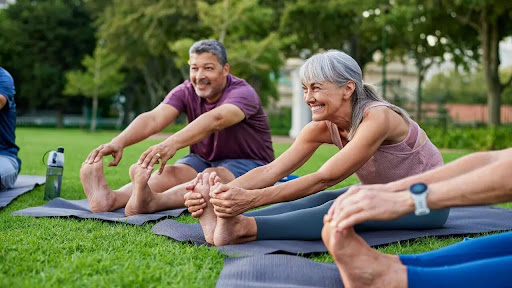
Performance vs. Protection: How to Balance Competition Goals with Spinal Longevity

For athletes recovering from spine surgery or managing spinal conditions, the pursuit of peak performance must be balanced with the need to protect long-term spinal health. Dr. Larry Davidson, a specialist in the field, explains that achieving this balance requires careful planning, honest self-assessment and collaboration with medical and performance teams. By making informed decisions at each stage of training and competition, athletes can pursue their goals, while safeguarding their spines for the future.
This balancing act is not about choosing between performance and protection. It is about integrating both priorities into a sustainable plan, that supports immediate achievement and long-term well-being. Athletes benefit most when training programs are designed with both resilience and peak performance in mind. Thoughtful planning ensures that gains are made, without compromising the body’s ability to recover and adapt over time.
The Challenges of Balancing Goals
Athletes often face pressure to return to peak form quickly after spine surgery or injury. Competition schedules, team expectations and personal ambitions can make it tempting to prioritize short-term success over long-term health. The risk is that pushing too hard or neglecting spinal protection strategies can lead to setbacks or new injuries.
Balancing these goals requires a shift in mindset. Athletes need to view spinal longevity as part of their performance strategy, rather than as a limitation. A healthy spine provides the foundation for efficient, powerful and resilient movement, qualities essential for success in any sport. This perspective encourages smarter training choices that enhance both short-term gains and long-term durability.
It also promotes greater respect for recovery periods, mobility work and core stability exercises. When athletes prioritize spinal health, they reduce the risk of setbacks that could derail their progress. Over time, this balanced approach supports consistent improvement and a longer, more successful athletic career.
The Role of Medical and Performance Teams
Medical and performance professionals play a key role in helping athletes balance performance and protection. Surgeons, physical therapists and trainers provide guidance on what is safe and appropriate at each stage of recovery and training. Their expertise helps athletes understand when to push, when to hold back and how to modify plans to reduce risk.
Open communication between athletes and their support teams is vital. Decisions about training loads, competition schedules and return-to-play timelines should reflect input from all parties involved. This collaborative approach helps ensure that choices align with health and performance goals.
Building a Sustainable Plan
A balanced plan starts with setting clear, realistic goals. Athletes should work with their teams to define success in the short and long term. These goals guide decisions about training intensity, recovery strategies and competition participation.
The plan should include specific milestones that reflect both performance metrics and health markers. For example, strength benchmarks, movement quality assessments and functional tests help track readiness for higher-level demands. At the same time, monitoring pain levels, fatigue and spinal mobility ensures that health is a priority.
Flexibility is another key element. A sustainable plan adapts to how the athlete responds to training. It allows for adjustments when needed, helping prevent overtraining and reducing the risk of reinjury.
Strategies for Supporting Spinal Longevity
Several strategies help athletes protect their spines, while pursuing high-level performance:
- Prioritize form and control – Technical precision reduces unnecessary stress on the spine during training and competition. Movements should be executed with attention to alignment, stability, and efficiency.
- Integrate core stability work – Ongoing core training helps maintain spinal support and reduces compensatory strain in other areas. It should include both static holds and dynamic movements.
- Manage training loads – Gradual progression in intensity and volume allows tissues to adapt safely, and sudden increases in workload are avoided.
- Include rest and recovery – Adequate rest is essential for both performance and protection. Recovery strategies such as sleep, nutrition and active recovery days support spinal health.
- Monitor warning signs – Athletes should stay alert to pain, fatigue or changes in movement quality that may signal the need for adjustments.
These strategies form the foundation for balancing competition goals with spinal longevity.
Making Informed Decisions
Informed decisions are built on data and self-awareness. Functional testing, performance metrics and medical assessments provide objective information about readiness and risk. Athletes who understand their bodies and listen to feedback from their teams are better equipped to make choices that support both health and success.
When making decisions about competing, increasing training intensity or returning to full participation, athletes should weigh the potential benefits against the risks. This process is not about avoiding challenges, but about approaching them in a way that respects both the demands of sport and the needs of the spine.
The Role of Mental Preparedness
Maintaining both performance and protection is as much about mindset as it is about movement. By practicing patience and discipline, athletes can channel frustration and eagerness into steady, sustainable progress.
Dr. Larry Davidson observes that mental preparedness includes setting realistic expectations, celebrating progress and staying focused on long-term goals. Visualization, goal setting and support from sports psychologists can all contribute to a healthy mindset that aligns with sustainable performance.
The Long-Term Payoff
Athletes who successfully balance performance and protection often find that they not only achieve their immediate goals but also extend their careers. A focus on spinal longevity helps reduce the frequency and severity of injuries, supports consistent training and builds a foundation for future success.
This approach also promotes overall health and quality of life beyond sports. A strong, healthy spine supports daily function, reduces discomfort and contributes to long-term well-being. By prioritizing both short-term performance and long-term protection, athletes gain benefits that go far beyond competition.
The Power of Collaboration
No athlete balances these priorities alone. Surgeons, therapists, trainers and other professionals provide the structure, expertise and support needed to build and maintain a balanced plan. Athletes who engage fully with this team-based model are better positioned to make informed decisions that serve both their competitive ambitions and their spinal health. This collaborative approach also builds trust, encouraging open communication that allows for adjustments as goals change.
True success lies in integrating these goals, rather than viewing them as opposing forces. With the right plan and support, athletes can pursue peak performance, while protecting the spine that carries them through every challenge. When performance and well-being are treated as equal priorities, athletes gain both longevity in sport and confidence in their recovery journey.











